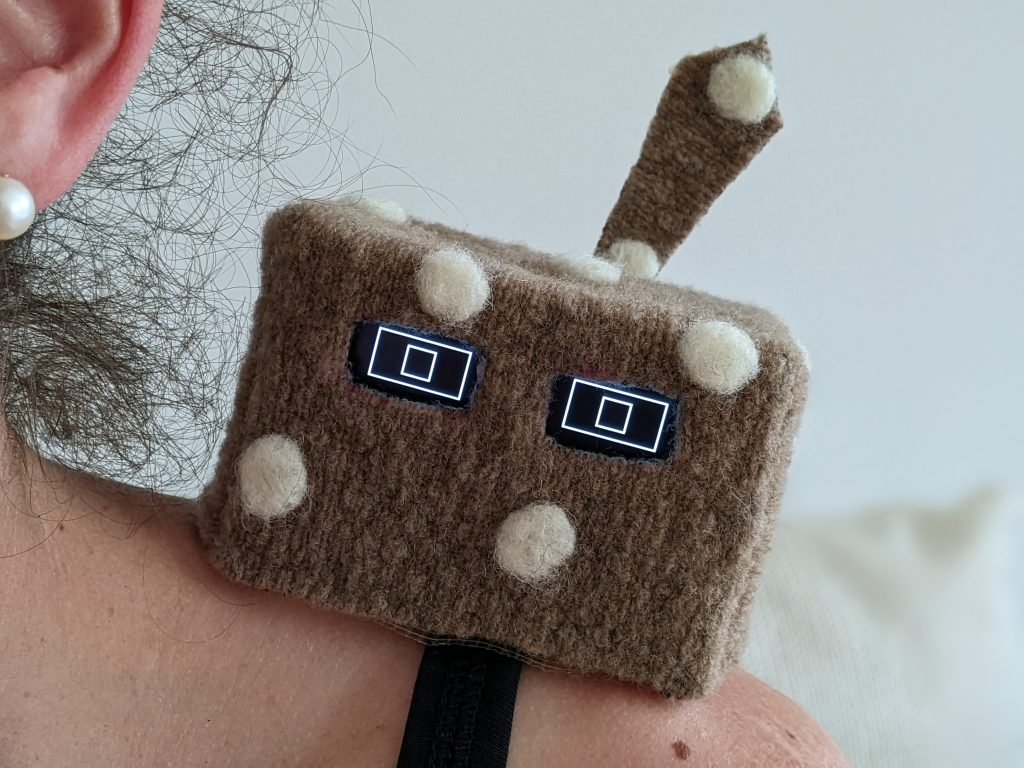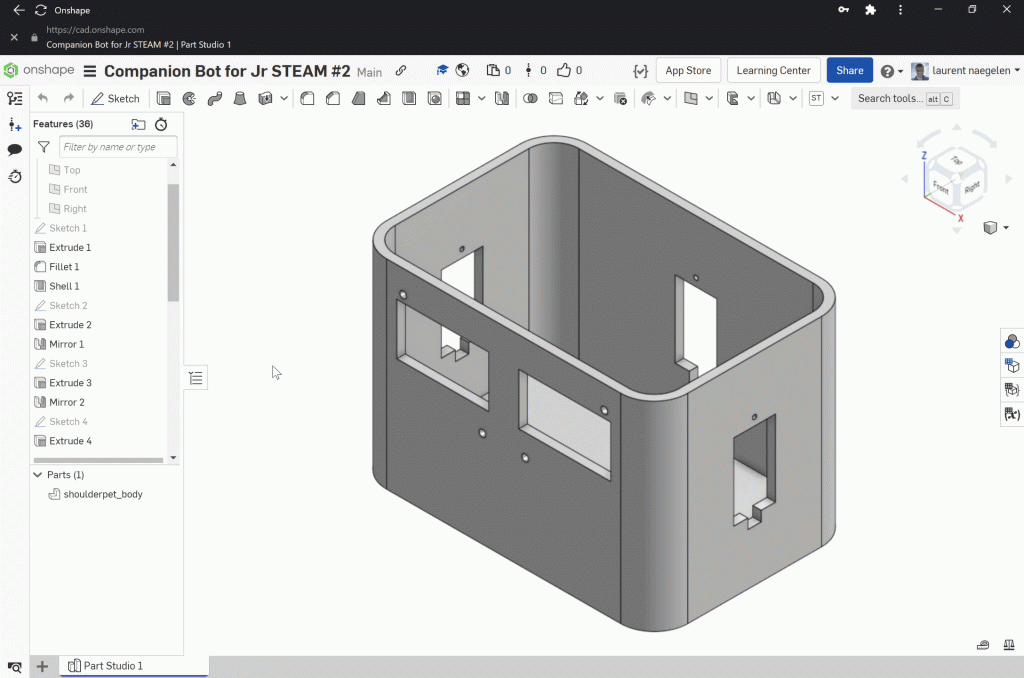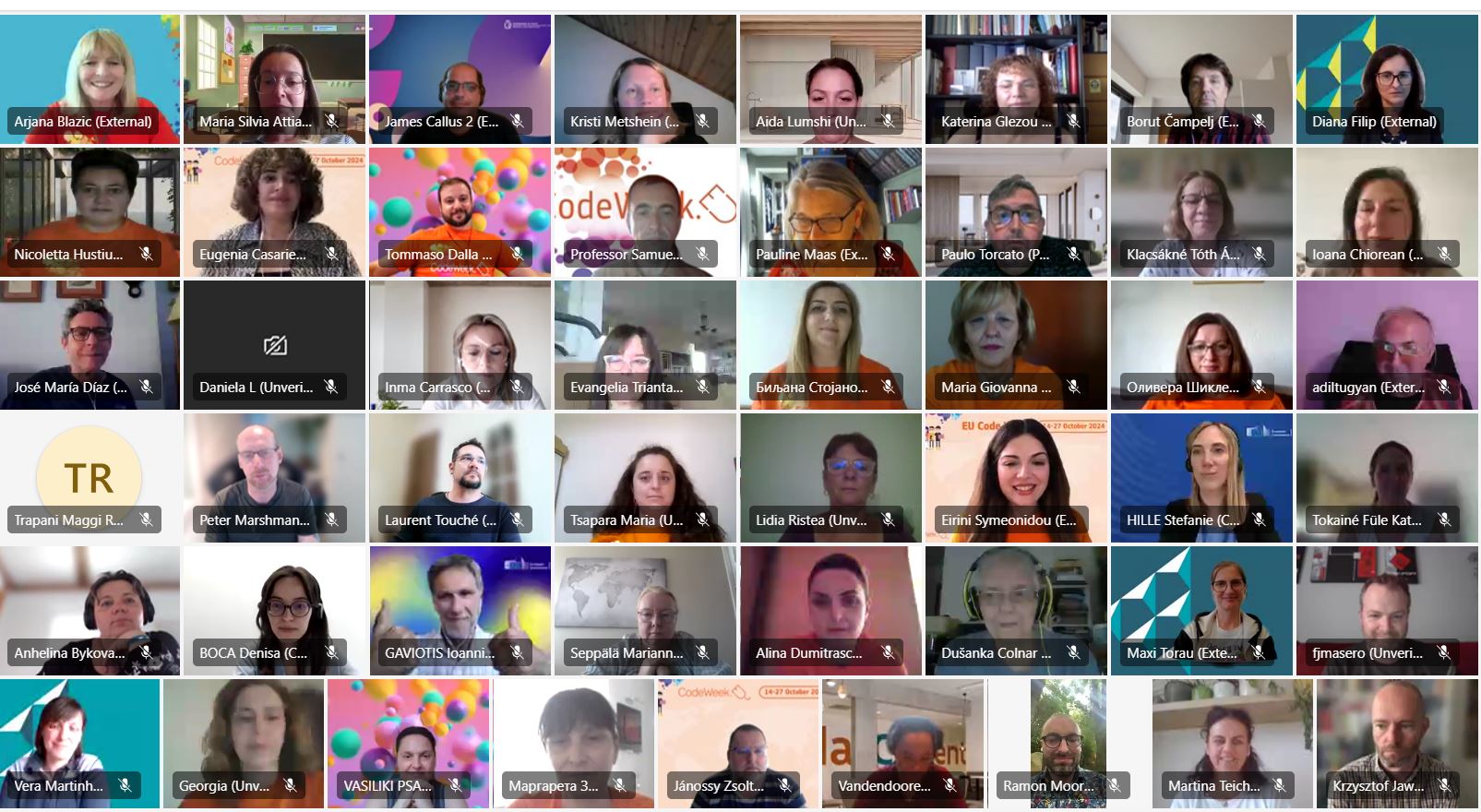Design a cute interactive Shoulder Pet robot
Publication date: October 6, 2022
Pets of all shapes and sizes are becoming more and more common in homes around the world, and signs saying “Pets Welcome” are increasingly visible in public places like shops, restaurants, and other venues. In the classroom where I teach, we also welcome pets, but of a different sort – the robotic sort.
When I first discovered the Companion Bots made and shared by Alex Glow, my first thought was that it could be a perfect project for my students at the TechLabs.ch school in Switzerland, where my goal is to engage them in hands-on, innovative STEAM (science, technology, engineering, art, math) activities to spark their creativity and help them build important skills.
These cute little creatures represent a perfect combination of all the components of STEAM teaching, like:
S: How do you capture a physical phenomenon like a sound?
T: How do OLED displays work?
E: How to use CAD to create a robot’s body and its accessories.
A: How to design a cutting pattern and sew the “skin” of a robot.
M: How to use a Cartesian coordinate system to program “OLED eyes”.
Creating a Pet Robot
The robot consists of a 3D printed body able to host up to 5 servo motors to move accessories (arms, legs, tail). The robot has a fabric skin to create the sense of a “furry friend.” The emotions are mainly created by the OLED eyes’ expressions, and the entire system is driven by a BBC micro:bit board.
For this project, I mentored 8 students aged between 7 and 9 years old. The project took around 10 hours in total, and each student had the opportunity to design his/her own robotic pet.

The pets are mainly composed of:
– a BBC micro:bit board
– a DFRobot IO expansion board
– a 64×128 0.96” OLED Display
– 9g micro servo motor(s)
– a fabric skin
– a 3D printed body and props
The right tools
When you are working with a class, you need to use tools that help you help your students in the most efficient and easy way. That’s why I chose to use Onshape, a cloud-native CAD platform that makes collaboration and team design work easy.
Onshape for Education is free, works on every device (computers, tablets, Chromebooks), and acts as a container for all types of data you might create during a project: CAD documents, of course, programs, videos/photos, PDF, etc. As an educator, the ability to keep a student’s documents and work in one location is a lifesaver, not only for me but for my students as well. And the fact that Onshape is entirely online means that all I need to access their work is the URL – no saved files in different formats or from different versions on a flash drive, or attached to an email. My students share the link with me and with one click I can see their entire project.
CAD as a Community
In the spirit of collaboration and community, here is the link to the public Onshape document that will allow you to modify the robot according to your material, desires, or project. You just need a free Onshape account to start designing. In my opinion, the real open-source aspect of a project lies in the fact to put at the disposal of the whole community natively modifiable files and not “dead” files like STLs.

In addition to having access to the native files for modification, Onshape also allows everyone to have access to the model creation tree and to learn from the design process. This is a very effective method with my students. They love to use this integrated time machine!
Just use the Rollback Bar to go through the entire design process, like in the GIF below:

If you open the open-source Onshape document, you will find embedded:
– the HEX program corresponding to the YouTube demo
– the wiring of the OLED screens to the board
– the sewing pattern for the skin
It’s your turn!
To make your own version of a shoulder pet like this, copy the public Onshape document and get started right away creating your first mechatronic system! You can create a free Onshape account right now by clicking here. For more free Onshape online training resources, I recommend visiting the Onshape Learning Center. It would be great to get some pictures of your robotic pet!
Author: laurent.naegelen@techademics.xyz, STEAM teacher
School: techlabs.ch, Switzerland

